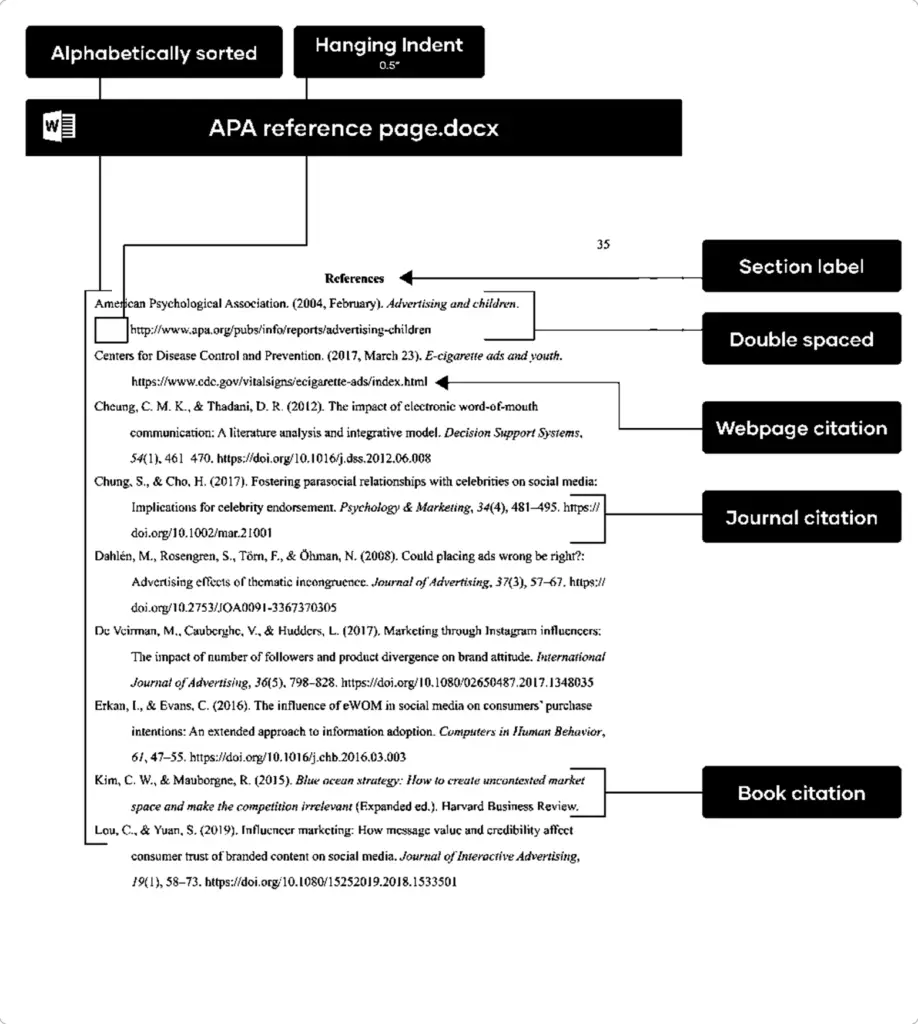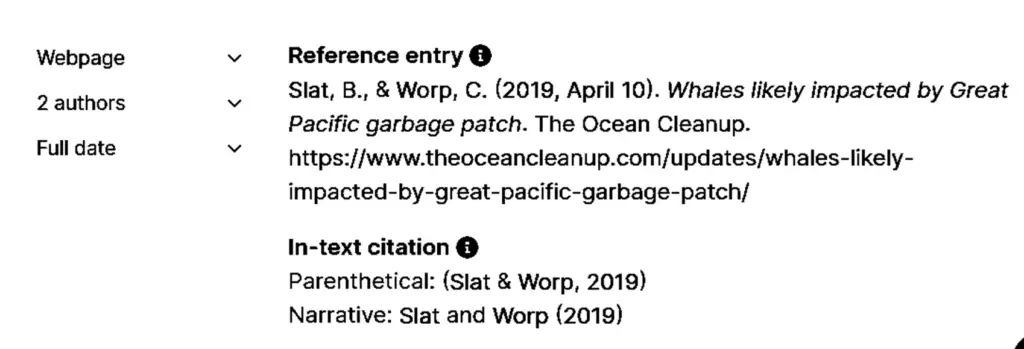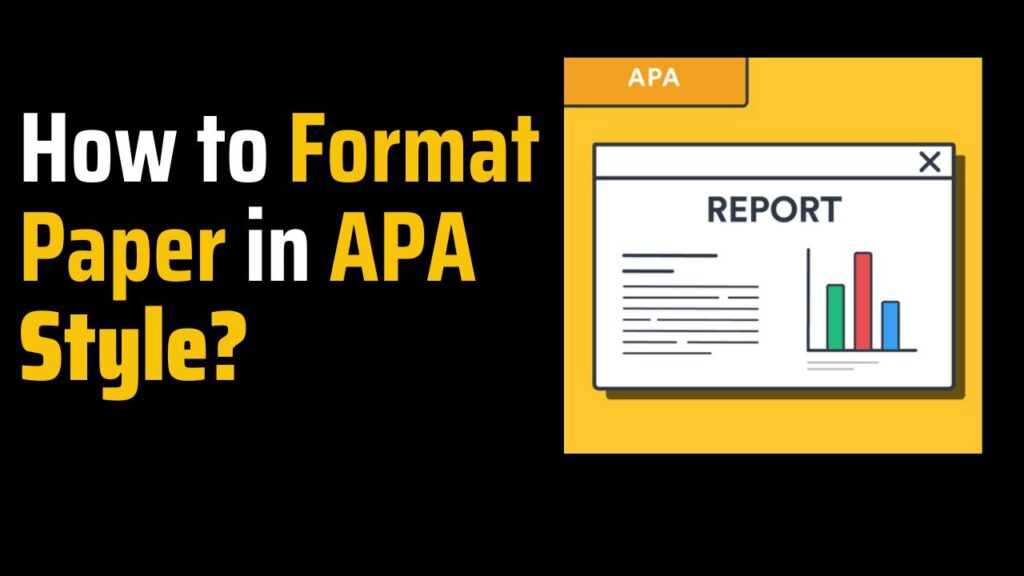When it comes to academic writing, proper citation is essential for acknowledging the sources you have used and giving credit to the original authors.
One widely used citation style is the APA (American Psychological Association) format.
In this article, we will explore what APA citations are, why they are important, and provide examples of APA references.
APA Citations
APA citations are a set of rules and guidelines developed by the American Psychological Association. They provide a standardized format for citing sources in academic papers, including books, articles, websites, and other scholarly materials.
APA citations consist of in-text citations within the body of the paper and a corresponding reference list at the end.
The purpose of APA citations is twofold:
- to give credit to the original authors
- to allow readers to locate the sources used in the research
By following APA guidelines, you ensure the accuracy, credibility, and integrity of your work.
How to Format APA reference page?
You add all the references you used in your paper on the reference page. Place the page immediately after the main body and before any appendices.
Write the section heading “References” (bold and in the centre of the page) there. Start listing your references in alphabetical order on the second line.
Use the following formatting guidelines for the APA reference page:
- Double spacing (within and between references)
- Hanging indent of ½ inch
- Legible font (e.g. Times New Roman 12 or Arial 11)
- Page number in the top-right header
Note: You only list references that you have in-text cited (with an in-text citation) on the reference page. References to private communications—such as emails, phone conversations, or online content that is only accessible to you—should not be mentioned.

APA In-Text Citations
APA in-text citations are used to acknowledge the source of a specific idea, quote, or paraphrased information within the body of your paper.
They help readers identify the exact source of the information and allow them to find the complete reference in the reference list.
In-text citations in APA style typically include the author’s last name and the year of publication, enclosed in parentheses.
Example of APA In-Text Citations
For example:
- (Smith, 2019) – When citing a source with one author.
- (Johnson & Davis, 2020) – When citing a source with two authors.
- (Anderson et al., 2021) – When citing a source with three or more authors.
If you directly quote a source, you should also include the page number or paragraph number. For example:
- (Brown, 2018, p. 42) – When citing a specific page.
- (Jones, 2022, para. 3) – When citing a specific paragraph.
Narrative vs. parenthetical citation
Parenthetical and narrative in-text citations are both acceptable formats.
Parenthetical citation: According to new research … (Smith, 2022)
Narrative citation: Smith (2022) notes that …
Multiple authors and corporate authors
When a source contains many authors or an organization as an author, the in-text citation is slightly changed. Pay close attention to punctuation and the use of the ampersand (&) symbol.
| Author type | Parenthetical citation | Narrative citation |
|---|---|---|
| One author | (Ann, 2023) | Ann (2023) |
| Two authors | (Ann & Jones, 2023) | Ann and Jones (2023) |
| Three or more authors | (Ann et al., 2023) | Ann et al. (2023) |
| Organization | (MIM Learnovate 2023) | MIM Learnovate (2023) |
APA Reference List
The APA reference list is a comprehensive list of all the sources cited in your paper. It provides detailed information that allows readers to locate the original source.
The reference list is arranged alphabetically by the author’s last name or the title of the work if no author is given.
Example of APA Reference List
Here is an example of an APA reference entry for different types of sources:
- Book:
Smith, J. D. (2019). The Power of Science: Exploring the Universe. Publisher.

- Journal Article:
Johnson, A. B., & Davis, C. L. (2020). The Impact of Climate Change on Biodiversity. Journal of Environmental Studies, 25(3), 123-145.

- Website:
Anderson, M. R., Peterson, L. S., & Collins, K. E. (2021). Understanding Artificial Intelligence. Retrieved from [URL]

Each type of source has specific formatting requirements, including the use of italics for book titles, capitalization rules, and the inclusion of volume and issue numbers for journal articles.
It is important to consult the official APA style guide or reputable online resources for detailed instructions on formatting your references correctly.
When to Use APA Citations?
When writing academic papers and essays, you must include APA citations for any ideas that are not your own or that are common knowledge in the field for which you are writing. You must cite any ideas you take from sources, even if you rephrase them in your own words.
The Importance of APA Citations
Using APA citations is crucial for several reasons:
- Academic Integrity: APA citations demonstrate your commitment to academic integrity by properly attributing ideas and research to their original sources.
- Avoiding Plagiarism: APA citations help you avoid unintentional plagiarism by clearly distinguishing your ideas from those of others.
- Credibility: Proper citations enhance the credibility of your research by allowing readers to verify your claims and evaluate the sources you have used.
- Ethical Standards: APA citations uphold ethical standards in academic writing by respecting the intellectual property rights of others.
By adhering to APA citation guidelines, you contribute to the integrity and transparency of scholarly communication.
Conclusion
APA citations are an essential aspect of academic writing. They provide a standardized format for acknowledging and crediting sources used in your research.
By using in-text citations and creating a comprehensive reference list, you ensure that your work is accurate, credible, and respects the intellectual property of others.
Familiarize yourself with the APA style guidelines and consult reputable resources to ensure your citations are formatted correctly.
Other articles
Please read through some of our other articles with examples and explanations if you’d like to learn more about research methodology.
Other articles
Please read through some of our other articles with examples and explanations if you’d like to learn more about research methodology.
Citation Styles
- APA Reference Page
- MLA Citations
- Chicago Style Format
- “et al.” in APA, MLA, and Chicago Style
- Do All References in a Reference List Need to Be Cited in Text?
Comparision
- Basic and Applied Research
- Cross-Sectional vs Longitudinal Studies
- Survey vs Questionnaire
- Open Ended vs Closed Ended Questions
- Experimental and Non-Experimental Research
- Inductive vs Deductive Approach
- Null and Alternative Hypothesis
- Reliability vs Validity
- Population vs Sample
- Conceptual Framework and Theoretical Framework
- Bibliography and Reference
- Stratified vs Cluster Sampling
- Sampling Error vs Sampling Bias
- Internal Validity vs External Validity
- Full-Scale, Laboratory-Scale and Pilot-Scale Studies
- Plagiarism and Paraphrasing
- Research Methodology Vs. Research Method
- Mediator and Moderator
- Type I vs Type II error
- Descriptive and Inferential Statistics
- Microsoft Excel and SPSS
- Parametric and Non-Parametric Test
Comparision
- Independent vs. Dependent Variable – MIM Learnovate
- Research Article and Research Paper
- Proposition and Hypothesis
- Principal Component Analysis and Partial Least Squares
- Academic Research vs Industry Research
- Clinical Research vs Lab Research
- Research Lab and Hospital Lab
- Thesis Statement and Research Question
- Quantitative Researchers vs. Quantitative Traders
- Premise, Hypothesis and Supposition
- Survey Vs Experiment
- Hypothesis and Theory
- Independent vs. Dependent Variable
- APA vs. MLA
- Ghost Authorship vs. Gift Authorship
Research
- Research Methods
- Quantitative Research
- Qualitative Research
- Case Study Research
- Survey Research
- Conclusive Research
- Descriptive Research
- Cross-Sectional Research
- Theoretical Framework
- Conceptual Framework
- Triangulation
- Grounded Theory
- Quasi-Experimental Design
- Mixed Method
- Correlational Research
- Randomized Controlled Trial
- Stratified Sampling
- Ethnography
- Ghost Authorship
- Secondary Data Collection
- Primary Data Collection
- Ex-Post-Facto
Research
- Table of Contents
- Dissertation Topic
- Synopsis
- Thesis Statement
- Research Proposal
- Research Questions
- Research Problem
- Research Gap
- Types of Research Gaps
- Variables
- Operationalization of Variables
- Literature Review
- Research Hypothesis
- Questionnaire
- Abstract
- Validity
- Reliability
- Measurement of Scale
- Sampling Techniques
- Acknowledgements
Statistics
- PLS-SEM model
- Principal Components Analysis
- Multivariate Analysis
- Friedman Test
- Chi-Square Test (Χ²)
- T-test
- SPSS
- Effect Size
- Critical Values in Statistics
- Statistical Analysis
- Calculate the Sample Size for Randomized Controlled Trials
- Covariate in Statistics
- Avoid Common Mistakes in Statistics
- Standard Deviation
- Derivatives & Formulas
- Build a PLS-SEM model using AMOS
- Principal Components Analysis using SPSS
- Statistical Tools
- Type I vs Type II error
- Descriptive and Inferential Statistics
- Microsoft Excel and SPSS
- One-tailed and Two-tailed Test
- Parametric and Non-Parametric Test



